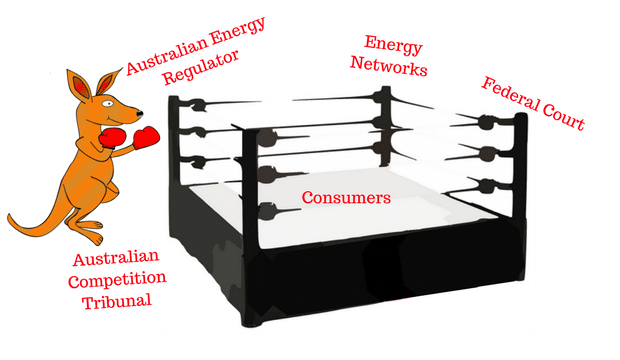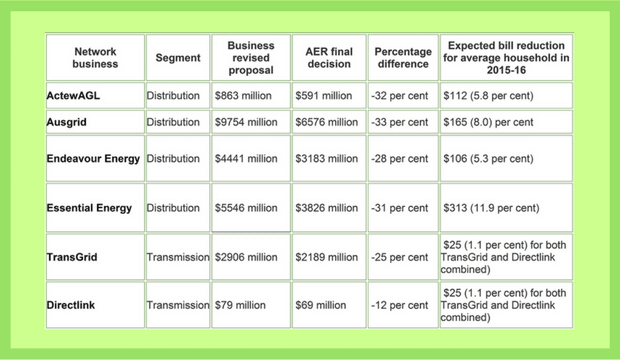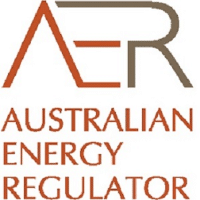Australians are paying too much due to electricity price hikes. In the five years to 2013, the average household power bill rose 70 per cent, from $970 to $1,660 annually, according to a Grattan Institute report.
More recently, a Federal Court decision handed down in May means NSW and ACT households could expect electricity price hikes of hundreds of dollars from July. These will almost certainly be followed by increases each year until 2024.

Residential power prices have jumped up to 135 per cent in some Australian states in the period between 2007 to 2016 and electricity costs for businesses have increased 50 per cent in just seven years.
Last year, a report by CME found that Australia has the world’s most overpriced electricity before tax. The study compared power prices in all Australian states with prices paid by households overseas. The results showed:
- South Australia had the OECD’s second-highest pre-tax electricity prices.
- Queensland has experienced the largest increases in power prices over the past ten years.
- Victoria had the OECD’s highest pre-tax electricity prices in June this year.
- NSW standing offers are higher than any OECD country.
- South Australia had the OECD’s second-highest pre-tax electricity prices last month.
- Western Australia has seen electricity prices almost double since 2006.
In June 2017, AGL was one of the first large national electricity providers to announce price hikes of up to $600 a year. Origin and Energy Australia also changed prices following this announcement.
Energy regulator vs electricity networks
Australia’s electricity price hikes crisis has been significantly influenced by the power struggle between electricity networks and the Australian Energy Regulator (AER).
Significant problems began in 2015, when AER announced it would cut revenue to state electricity networks for the next four years by roughly 30 per cent below what they requested in some cases.

The power utilities argued the size of the cuts imposed on their spending plans were too steep and would compromise network reliability. This would raise the prospect of power interruptions and failures, and so they took legal action to force the regulator’s hand.
An appeal by the NSW networks to the Australian Competition Tribunal was upheld last year. In overturning the AER decision, the Tribunal declared:
“In the Networks NSW matters, the Tribunal’s conclusions on the grounds of review indicate that in significant respects the AER has formed its decision on foundations that are not properly established. Put another way, its decisions have been reached on complex factual bases and/or the exercise of discretions giving rise to very significant outcomes which, by reason of the Tribunal’s conclusions on the grounds of review, are not appropriate to support the ultimate decision of the AER.”
AER appealed the Tribunal decision, taking it to the Federal Court, but the court upheld the earlier finding. This decision means the AER revenue cuts to networks are reversed, and networks will be able to charge households hundreds of dollars more per year, starting July 2018.
Networks need to fund their own maintenance: AER
In NSW the friction between the AER and the electricity networks is pronounced. When issuing the AER’s decision on price cuts to consumers on April 30 2015, AER Chair Paula Conboy singled out NSW, saying 50 per cent of costs to households related to the maintenance of the network’s poles and wires – not the cost of generation.
She said the AER decision made adequate financial provision for the maintenance of the network. “Any costs above efficient levels will need to be funded by the network owners, not customers,” she announced.
“The demand for electricity has fallen and is expected to remain reasonably flat over the 2015 to 2019 regulatory control period. This puts less strain on the network and requires less investment to provide a reliable supply of energy. This final determination reduces the spending proposal to ensure that only prudent and efficient costs are recovered from consumers.”
As the regulator and the networks drag each other through the courts, the decisions passed down particularly affect consumers living on the poverty line and in lower socio-economic circumstances.
Smart meter technology can now disconnect electricity supply remotely. Combined with rising electricity prices, this means more people are likely to have recurring periods without electricity if they don’t pay their bills on time.
Impact of electricity price hikes on the disadvantaged
In 2016, the St Vincent de Paul Society undertook a first time study on households most at risk of electricity disconnections. The study recommended increased social security payments for disadvantaged communities and other protections.
The ‘Households in the Dark’ report is an analysis of approximately 200,000 electricity disconnections across South Australia, Victoria, NSW and South East Queensland from July 2012 to July 2015. It found those living in regional and metropolitan Victoria were most at risk of being cut off multiple times.
The report found that In 2012/13 the electricity disconnection rate for residential customers in NSW, South Australia, Queensland and Victoria was between 1 and 1.5 per 100 customers.
Victoria’s rate of 1.47, for example, means that over 34,000 households were disconnected from supply due to non-payment that year.
“In Victoria, the roll out of smart meters, which enable disconnections to be done remotely instead of during a site visit, results in an increase in the disconnection completion rate,” said Gavin Dufty, energy spokesperson for the St Vincent de Paul Society.
The report’s recommendations are directed at energy policy makers and energy regulators at state and Commonwealth level. “Energy policy and regulatory measures alone cannot prevent households from being disconnected,” Mr Dufty said. “Increased social security payments are also necessary to help households out of poverty.”
Will the Federal Government step in on retail prices?
Despite the Australian Competition Tribunal finding against the AER attempts to cut electricity prices, the Federal Government is now directing the Australian Competition and Consumer Commission (ACCC) to review retail electricity prices.
The decision comes in the wake of threats by mining giant Glencore that it might have to pull out of its Mt Isa mining venture because of electricity price hikes.
“The Government has directed the Australian Competition and Consumer Commission to review retail electricity prices,” an Energy Department spokesperson said.
“The review will consider, among other things, the competitiveness of offers available to larger business customers and take into account wholesale electricity market conduct, price and cost issues.”
As the power price pendulum swings back and forth between federal and state governments, networks and regulators, consumers can only duck their heads.
In the meantime, solar panels and battery storage units are now more affordable than ever and can potentially help consumers slash power bills and reduce reliance on grid electricity. It’s being hailed as the future of Australia’s energy in the face of ongoing electricity price hikes.












































